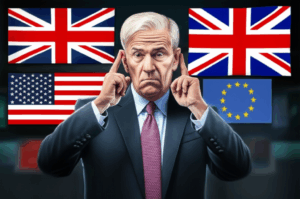May CPI Looks Pre-Pandemic TameBut Have Tariffs Fully Kicked In Yet?
The latest Consumer Price Index (CPI) report for May has delivered a dose of much-needed optimism to financial markets and households alike. With inflation appearing to cool more significantly than many economists anticipated, the data painted a picture reminiscent of pre-pandemic price stability, suggesting a potential return to normalcy after years of elevated costs. This moderation could pave the way for the Federal Reserve to consider interest rate cuts sooner rather than later, offering a glimmer of hope for lower borrowing costs across the board. Yet, beneath this reassuring surface, a looming question casts a shadow over the long-term inflation outlook: have the effects of recent and proposed tariffs truly begun to filter through the economy, or is this calm merely the eye of a storm?
Initial reactions to the May CPI figures have been overwhelmingly positive. The report indicated a broad-based cooling of price pressures, with key categories like energy and used vehicles showing declines, and even the persistently high cost of services beginning to moderate. This disinflationary trend suggests that the Federal Reserve’s aggressive monetary tightening, which saw benchmark interest rates rise to their highest level in decades, is finally bearing fruit. For young adults navigating a challenging economic landscape, this news offers a psychological breather, hinting that their purchasing power might stabilize after years of erosion. Lower inflation typically translates to more predictable budgeting and, eventually, a greater sense of financial security. However, economic data is rarely static, and the future trajectory of prices is now heavily influenced by global trade policies, particularly the strategic imposition of new tariffs.
The Biden administration has recently announced significant tariff hikes on a range of Chinese imports, targeting sectors deemed critical for future economic competitiveness, including electric vehicles (EVs), batteries, solar cells, steel, and aluminum. These measures, building upon tariffs already in place, aim to protect domestic industries and encourage U.S. manufacturing. While the long-term goals of such policies are often strategic, their immediate economic impact is to increase the cost of imported goods. Businesses that rely on these imports, from EV manufacturers to construction companies, will face higher input costs. Historically, these increased costs are, at least partially, passed on to consumers in the form of higher retail prices. The crucial question of the May CPI’s apparent tameness, then, hinges on the timing of these tariff impacts. The economic effects of tariffs are not instantaneous; they typically operate with a significant lag. Products already in the supply chain or in inventory were purchased under pre-tariff conditions. It takes time for new, higher-priced imports to replace existing stock, for businesses to renegotiate contracts, and for the full cost of new duties to trickle down to the end consumer. This lag effect means that the tranquil May CPI might not yet reflect the true inflationary impulse from these trade actions.
Furthermore, the scope of these tariffs extends beyond direct consumer goods. Tariffs on intermediate goods like steel and aluminum impact manufacturing across multiple sectors, potentially raising costs for everything from appliances to infrastructure projects. The ripple effect can be extensive, influencing production costs and ultimately consumer prices across a much wider array of products than initially targeted. The potential for retaliatory tariffs from affected nations adds another layer of complexity, risking trade disruptions and further price volatility. While the current CPI report is a welcome development, its “pre-pandemic tame” appearance could prove misleading if the full inflationary force of these trade barriers has yet to be unleashed. The coming months will be critical in observing whether the disinflationary momentum can withstand the upward pressure from protectionist policies. For young professionals and aspiring investors, understanding this dynamic interplay between monetary policy, trade policy, and consumer prices will be essential for making informed financial decisions in an increasingly interconnected and uncertain global economy. The May CPI may offer a moment of calm, but the true test of enduring price stability lies in what comes next.





